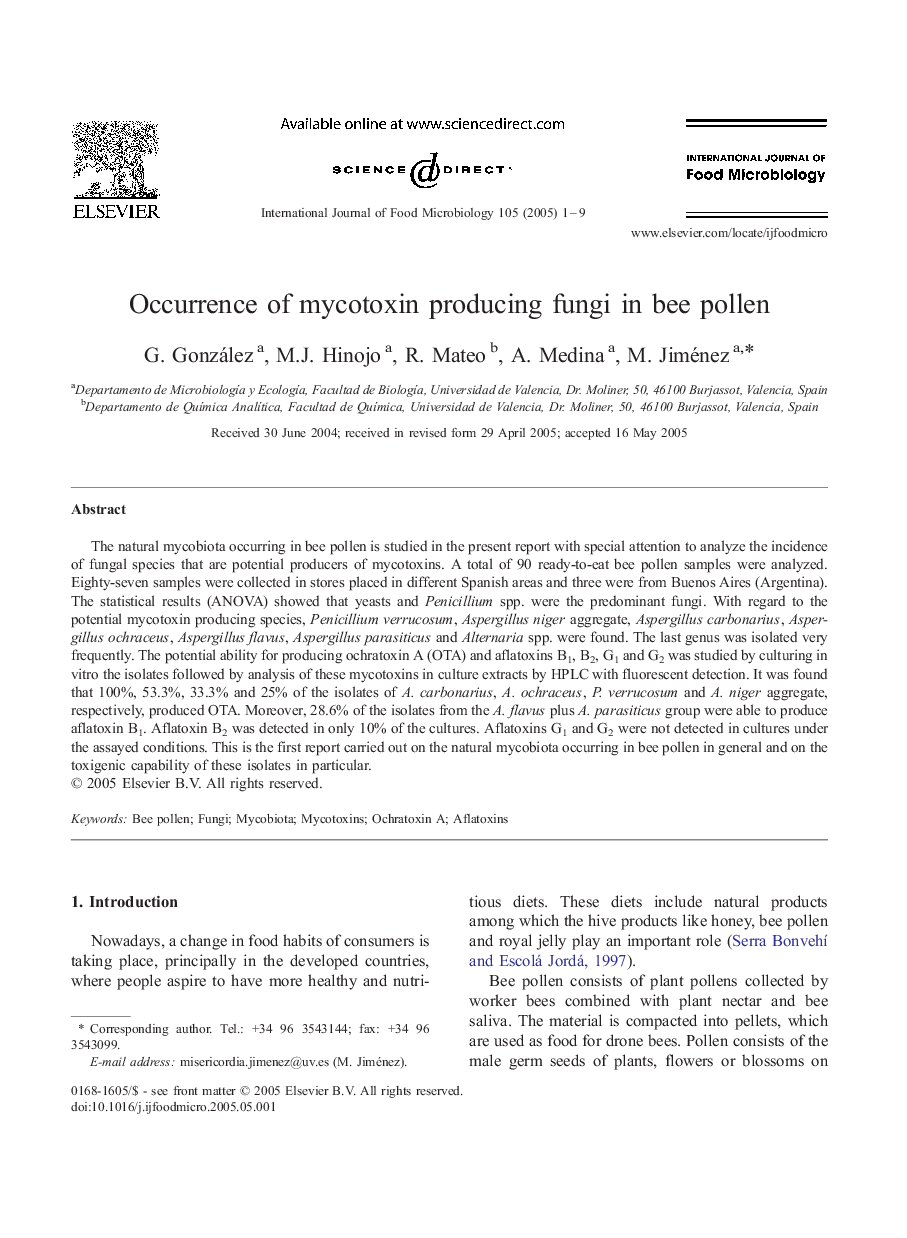| Article ID | Journal | Published Year | Pages | File Type |
|---|---|---|---|---|
| 10107197 | International Journal of Food Microbiology | 2005 | 9 Pages |
Abstract
The natural mycobiota occurring in bee pollen is studied in the present report with special attention to analyze the incidence of fungal species that are potential producers of mycotoxins. A total of 90 ready-to-eat bee pollen samples were analyzed. Eighty-seven samples were collected in stores placed in different Spanish areas and three were from Buenos Aires (Argentina). The statistical results (ANOVA) showed that yeasts and Penicillium spp. were the predominant fungi. With regard to the potential mycotoxin producing species, Penicillium verrucosum, Aspergillus niger aggregate, Aspergillus carbonarius, Aspergillus ochraceus, Aspergillus flavus, Aspergillus parasiticus and Alternaria spp. were found. The last genus was isolated very frequently. The potential ability for producing ochratoxin A (OTA) and aflatoxins B1, B2, G1 and G2 was studied by culturing in vitro the isolates followed by analysis of these mycotoxins in culture extracts by HPLC with fluorescent detection. It was found that 100%, 53.3%, 33.3% and 25% of the isolates of A. carbonarius, A. ochraceus, P. verrucosum and A. niger aggregate, respectively, produced OTA. Moreover, 28.6% of the isolates from the A. flavus plus A. parasiticus group were able to produce aflatoxin B1. Aflatoxin B2 was detected in only 10% of the cultures. Aflatoxins G1 and G2 were not detected in cultures under the assayed conditions. This is the first report carried out on the natural mycobiota occurring in bee pollen in general and on the toxigenic capability of these isolates in particular.
Related Topics
Life Sciences
Agricultural and Biological Sciences
Food Science
Authors
G. González, M.J. Hinojo, R. Mateo, A. Medina, M. Jiménez,
